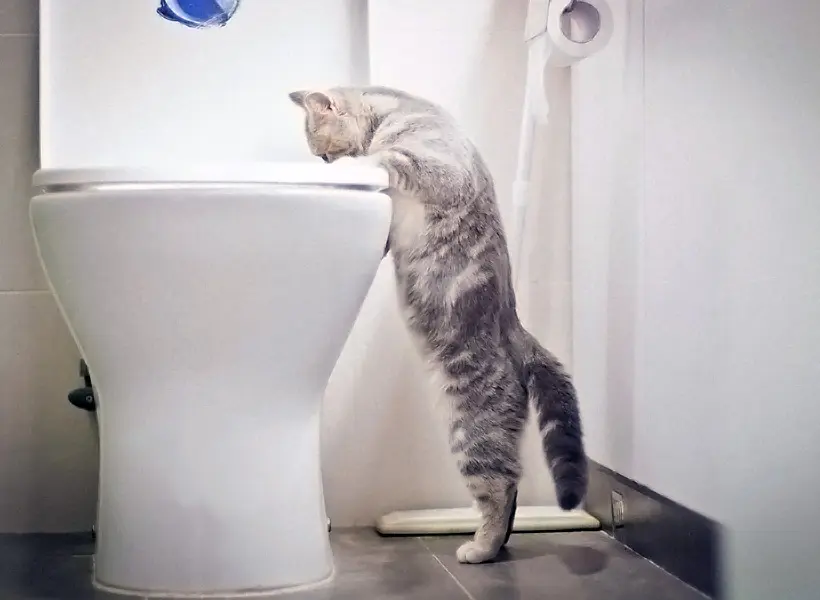Potential Risks of Flushing Cat Poop Down Your Toilet - Tips for Safer Handling
Potential Risks of Flushing Cat Poop Down Your Toilet - Tips for Safer Handling
Blog Article
We've come across the article pertaining to How to Dispose of Cat Poop and Litter Without Plastic Bags down the page on the net and believe it made good sense to discuss it with you on this page.

Introduction
As cat owners, it's vital to be mindful of just how we get rid of our feline pals' waste. While it may seem hassle-free to flush pet cat poop down the commode, this technique can have harmful repercussions for both the environment and human health and wellness.
Alternatives to Flushing
Fortunately, there are much safer and more accountable ways to throw away cat poop. Take into consideration the following options:
1. Scoop and Dispose in Trash
The most typical approach of throwing away pet cat poop is to scoop it into a naturally degradable bag and toss it in the garbage. Make certain to use a devoted trash scoop and get rid of the waste immediately.
2. Usage Biodegradable Litter
Go with eco-friendly pet cat clutter made from products such as corn or wheat. These trashes are eco-friendly and can be safely thrown away in the garbage.
3. Bury in the Yard
If you have a backyard, think about burying pet cat waste in a marked location away from veggie yards and water sources. Make sure to dig deep adequate to avoid contamination of groundwater.
4. Install a Pet Waste Disposal System
Buy a pet dog garbage disposal system especially developed for feline waste. These systems utilize enzymes to break down the waste, lowering smell and environmental effect.
Wellness Risks
In addition to ecological issues, flushing feline waste can additionally present health risks to people. Feline feces may have Toxoplasma gondii, a bloodsucker that can create toxoplasmosis-- a possibly extreme illness, specifically for pregnant women and people with weakened immune systems.
Environmental Impact
Flushing cat poop presents dangerous microorganisms and parasites into the water system, posturing a substantial danger to water communities. These contaminants can adversely affect marine life and compromise water top quality.
Final thought
Responsible pet dog ownership prolongs beyond giving food and shelter-- it additionally includes appropriate waste management. By refraining from purging feline poop down the commode and selecting different disposal techniques, we can reduce our ecological footprint and safeguard human wellness.
Why You Should Never Flush Cat Poop Down the Toilet
A rose by any other name might smell as sweet, but not all poop is created equal. Toilets, and our sewage systems, are designed for human excrement, not animal waste. It might seem like it couldn’t hurt to toss cat feces into the loo, but it’s not a good idea to flush cat poop in the toilet.
First and foremost, assuming your cat uses a litter box, any waste is going to have litter on it. And even the smallest amount of litter can wreak havoc on plumbing.
Over time, small amounts build up, filling up your septic system. Most litter sold today is clumping; it is made from a type of clay that hardens when it gets wet. Ever tried to scrape old clumps from the bottom of a litter box? You know just how cement-hard it can get!
Now imagine just a small clump of that stuck in your pipes. A simple de-clogger like Drano isn’t going to cut it. And that means it’s going to cost you big time to fix it.
Parasitic Contamination
Believe it or not, your healthy kitty may be harboring a nasty parasite. Only cats excrete Toxoplasma in their feces. Yet it rarely causes serious health issues in the cats that are infected. Most people will be fine too if infected. Only pregnant women and people with compromised immune systems are at risk. (If you’ve ever heard how women who are expecting are excused from litter cleaning duty, Toxoplasma is why.)
But other animals may have a problem if infected with the parasite. And human water treatment systems aren’t designed to handle it. As a result, the systems don’t remove the parasite before discharging wastewater into local waterways. Fish, shellfish, and other marine life — otters in particular — are susceptible to toxoplasma. If exposed, most will end up with brain damage and many will die.
Depending on the species of fish, they may end up on someone’s fish hook and, ultimately on someone’s dinner plate. If that someone has a chronic illness, they’re at risk.
Skip the Toilet Training
We know there are folks out there who like to toilet train their cats. And we give them props, it takes a lot of work. But thanks to the toxoplasma, it’s not a good idea.

We hope you liked our piece on Don’t flush cat feces down the toilet. Thank you so much for finding the time to read through our blog. Enjoyed reading our article? Please share it. Let others check it out. Bless you for your time. Come back soon.
Call Today Report this page